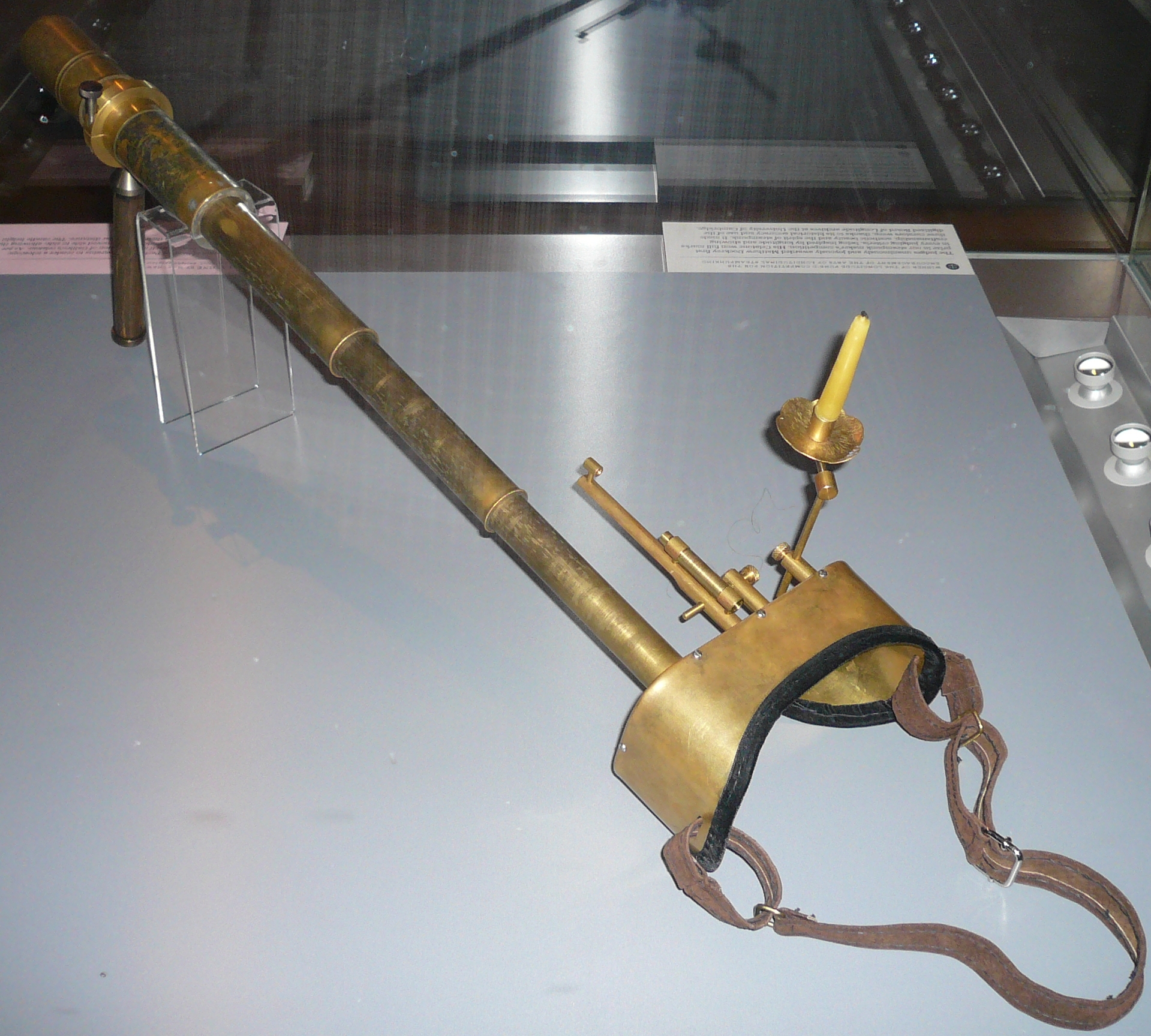Celatone on:
[Wikipedia]
[Google]
[Amazon]

 The celatone was a device invented by
The celatone was a device invented by
Video animation of a Celatone and its use in discovering the longitude for marine navigation
"Apparatus to render a telescope manageable on shipboard"
{{Authority control Astronomical instruments

 The celatone was a device invented by
The celatone was a device invented by Galileo Galilei
Galileo di Vincenzo Bonaiuti de' Galilei (15 February 1564 – 8 January 1642) was an Italian astronomer, physicist and engineer, sometimes described as a polymath. Commonly referred to as Galileo, his name was pronounced (, ). He w ...
to observe Jupiter's moons with the purpose of finding longitude
Longitude (, ) is a geographic coordinate that specifies the east– west position of a point on the surface of the Earth, or another celestial body. It is an angular measurement, usually expressed in degrees and denoted by the Greek let ...
on Earth. It took the form of a piece of headgear with a telescope taking the place of an eyehole.
Modern versions
In 2013, Matthew Dockrey created a replica celatone, using notes from a version created by Samuel Parlour. From April 2014 to January 2015, Dockrey's celatone was on display in theRoyal Observatory, Greenwich
The Royal Observatory, Greenwich (ROG; known as the Old Royal Observatory from 1957 to 1998, when the working Royal Greenwich Observatory, RGO, temporarily moved south from Greenwich to Herstmonceux) is an observatory situated on a hill in ...
in east London.
See also
* Longitude prize *Galilean moons
The Galilean moons (), or Galilean satellites, are the four largest moons of Jupiter: Io, Europa, Ganymede, and Callisto. They were first seen by Galileo Galilei in December 1609 or January 1610, and recognized by him as satellites of Jup ...
References
*External links
Video animation of a Celatone and its use in discovering the longitude for marine navigation
"Apparatus to render a telescope manageable on shipboard"
{{Authority control Astronomical instruments